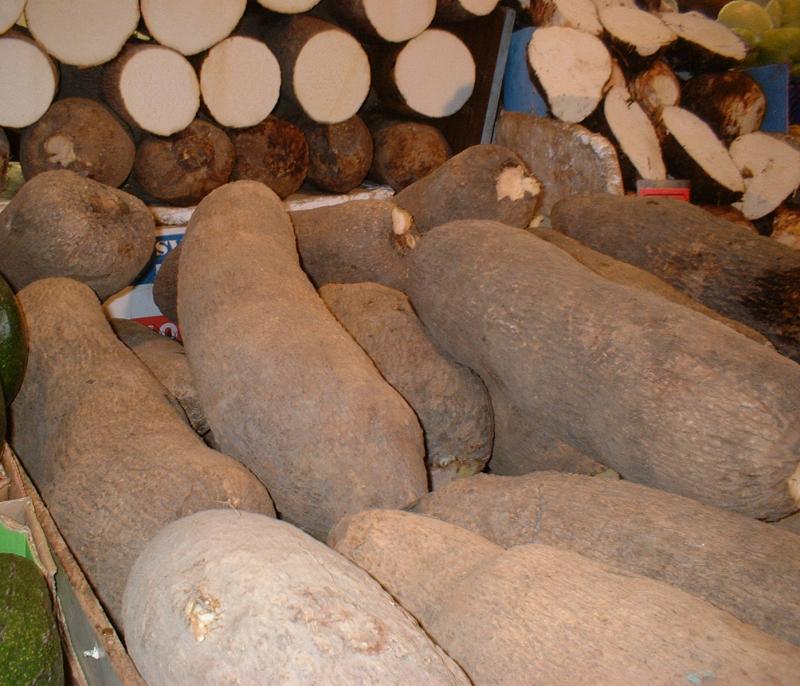Yams (Dioscorea spp.) are a staple crop in many regions, and they offer significant nutritional value. In South Africa, where conditions can vary, understanding the process of growing yams from seed to harvest, along with effective management practices, is crucial for a successful yield. This guide covers the essential stages of yam cultivation, including land preparation, planting, growth, and storage, along with recommendations for inputs, machinery, and disease management.
1. Land Preparation
Site Selection: Yams thrive in well-drained, loamy soils. Choose a location with full sunlight and good air circulation. Avoid areas prone to waterlogging.
Soil Preparation: Prepare the soil by clearing it of weeds and debris. Plough or till the soil to a depth of at least 30 cm to improve aeration and drainage. Incorporate organic matter, such as compost or well-rotted manure, to enhance soil fertility.
Soil Testing: Conduct a soil test to determine pH and nutrient levels. Yams prefer a slightly acidic to neutral pH (5.5 to 7.0). Adjust soil pH and nutrient levels as needed based on test results.
2. Planting Yams
Seed Selection: Yams are typically grown from tuber pieces rather than seeds. Select healthy, disease-free tubers or tuber sections that are firm and free from sprouting or rot.
Preparation of Seed Tubers: Cut large tubers into smaller pieces, ensuring each piece has at least one eye or sprout. Allow the cut surfaces to dry for a day or two to reduce the risk of rot.
Planting: Plant yam tuber pieces in rows, spaced about 90 cm apart, and within the rows, space pieces about 30 cm apart. Plant at a depth of 10-15 cm. Create mounds or ridges to help with drainage and tuber development.
3. Growth Stages
Emergence: Yams typically take 2-4 weeks to emerge from the soil. During this period, maintain consistent soil moisture but avoid waterlogging.
Vegetative Growth: As the vines develop, provide support if needed using stakes or trellises to keep them off the ground. Ensure regular weeding to reduce competition for nutrients and water.
Tuber Development: Yams grow tubers underground, so monitor for adequate soil moisture and ensure good drainage to prevent tuber rot. The tuber development stage lasts from about 4-7 months, depending on the variety.
Flowering and Maturity: Yams may flower, but tuber development is the primary focus. Harvest typically occurs 8-12 months after planting, when the vines start to die back and tubers reach full size.
4. Watering and Fertilizing
Water Requirements: Yams need consistent moisture but do not tolerate waterlogging. Water regularly, especially during dry periods, to maintain even soil moisture. Reduce watering as harvest time approaches to avoid tuber rot.
Fertilization: Apply a balanced fertilizer at planting time. As the yams grow, side-dress with additional fertilizer rich in potassium and phosphorus to support tuber development. Avoid excessive nitrogen, which can promote excessive vine growth at the expense of tubers.
5. Pest and Disease Management
Common Pests: Watch for pests such as yam beetles and wireworms. Use insecticides as needed, but choose products with minimal impact on beneficial insects. Integrated pest management (IPM) strategies, including crop rotation and biological control, can be effective.
Diseases: Common diseases include yam mosaic virus, tuber rot, and rust. Preventive measures include selecting disease-resistant varieties, practicing good field hygiene, and using fungicides if necessary. Monitor for symptoms and apply treatments according to recommended guidelines.
Herbicides: Use herbicides cautiously and only as needed to control weeds. Apply pre-emergence herbicides before yam sprouts appear, or post-emergence herbicides carefully, avoiding contact with yam vines.
6. Harvesting and Storage
Harvesting: Harvest yams when the vines start to yellow and die back. Carefully dig up the tubers using a fork or spade to avoid damaging them. Handle tubers gently to prevent bruising.
Storage: Cure harvested yams by placing them in a warm, dry, and well-ventilated area for 1-2 weeks to allow the skin to harden. Store cured yams in a cool, dry, and dark place, ideally in a well-ventilated container to prevent rot.
Monitoring Storage Conditions: Regularly check stored yams for signs of decay or sprouting. Remove any affected tubers to prevent the spread of rot.
Growing yams successfully in South Africa involves careful planning and management throughout the entire cultivation process. From selecting the right site and preparing the soil to managing pests and diseases, each stage requires attention to detail. By following these guidelines, South African farmers can optimize yam production, ensuring a bountiful and nutritious harvest.
Join 'Farmers Mag' WhatsApp Channel
Get the latest Farming news and tips delivered straight to your WhatsApp
CLICK HERE TO JOIN






